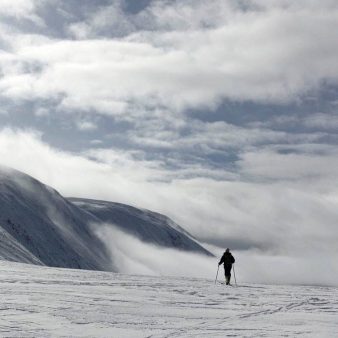II: Bodily threats
8 November 2020
It is the bodily difference between males and females that explains most of the other differences in the roles of men and women in any given society—both in Homeric society and in ours. The social and ceremonial differences in their roles are ritualisations and ’containments’ of the difference and the threat that that implies. (Note how religion has a role in sanctioning all this too.)
One thing that these considerations explain is of course why women find male-bodied people threatening, often including trans women (at least when they’re aware that someone is a trans woman). The threat is bound to be real as long as we have a patriarchy. And of course the threat can lead to actual violence.
So to find a way of reimagining society that is not the patriarchy, we need to find a way of fundamentally rethinking the whole human attitude to force and violence. That is a hard thing to do, and it is a big task; my own attempt at it is in a piece of science-fiction-fantasy (partly drawing on Homer, partly on Ursula Le Guin, and partly on Jonathan Swift) that I put on the internet, about a possible society called Lissounes. What centrally needs reimagining, I suspect, is the ancient link that makes family life a way of ensuring the man’s genetic success; in a matriarchy this might be undermined by making fatherhood a private matter for the mother, i.e. by creating a society where a woman has an unchallengeable right to choose the father of her children, and is under no obligation—and no threat of violence—to disclose who it is to anyone.
But that is (literally) another story. The central point, for now, is simply that as I understand it, feminism is essentially a response to male violence. And that I think is crucial to understanding and negotiating the relationship between feminists and trans women, in two ways. First, because typically trans women at least start their lives male-bodied—and it is the male body that feminists rightly identify as the generic threat to women. And secondly, because feminism, if I have it right, is not just about gender roles; it is ultimately about bodies. That means, among other things, that it can be an evasion for trans activists to focus on gender roles, and treat physical sex as some kind of distraction. For the feminist, by contrast—if I am understanding things aright—the body is everything. And the fact that trans women’s bodies typically have a different history and career from cis women’s bodies is, as they rightly point out, not an irrelevance about trans women; it is a crucial fact about them.
We now perhaps have to hand an explanation of why, within a patriarchy, trans women are so routinely subjected to threats and violence too. The answer is: because they threaten the bodily differential on which the patriarchy depends. They claim, in various ways, to adopt the life and the bodies of women. But they at least start off as men. So much power and psychic energy is invested in maintaining the male/ female differential; and trans women subvert that threat. They are implicitly and externally protesting against patriarchy by the way they live. And if they become politically aware, of the reality of patriarchy as a system of violence and the possibility of subverting it by living as they do, then they may become conscious and deliberate protesters against the patriarchy.
In fact I’m increasingly inclined to think—it is Homer who’s radicalising me here—that the whole business of being transgender is subversive of patriarchy. And so it’s a rejection of the body-based violence that grounds patriarchy. And making such a signal is costly: you get thumped for it. If trans-suspicious feminists want costly assurance, they should consider the cost of preparedness on trans women’s part to stand out as protesters against patriarchy.
So transgender is or can be a politically revolutionary act. (It is sometimes said that the four stages of being a trans woman are 1 I can’t live as a woman, 2 I shouldn’t live as a woman, 3 I’m going to live as a woman anyway, 4 smash capitalism.) About that at any rate, the right-wing headbanger transphobes are correct: the UKIPer in the Welsh Senedd who recently said that tolerating transgender in Wales would mean “the collapse of civilisation” was absolutely right. Tolerating transgender in Wales will indeed hasten the end of the kind of society that he values. Well you know what, I grew up in a society exactly like that, and the sooner such societies all collapse the better for everyone, transgender and cisgender alike.
All this makes it both understandable, but also sadly ironic, when other women see trans women as a threat or part of the patriarchy. Their natural political position is as allies against the patriarchy. Very possibly, they are trans women because they want to make a statement of solidarity and protest. (Among other motives; of course that wouldn’t be their only reason.) They subvert it by collapsing the difference, by being visible (when they are) as cross-cases. By saying “the masculine/ feminine alignment of power and appearance is not inevitable”.
But of course there is a big division that we need to note between those trans women who pass and those who don’t. When trans women pass they aren’t seen as trans women, but as cis women, natal women. So their political status is not visible at all to the synchronic observer. They cannot and do not excite suspicion or a sense of threat in other women. It is the trans women who are seen as trans women of whom I’m mainly speaking here. But the fact that there are actually two classes of trans women, and the passers are not seen in public as trans women at all but as natal women, is politically and ethically crucial. It’s a fact that seems to me to go missing in a lot of the familiar talk of trans women as a visible threat. The ones who aren’t visible obviously aren’t.
Trans women can and do attract ideological gate-keeping violence, usually metaphorical but sometimes literal, both from society at large, and from trans-suspicious feminists. But not always. It’s worth reflecting on what actually happens in practice in society. In practice trans women do live and present as women, and are accepted as such, and can get their bank cards and their address and their passports and use the ladies’, and it simply isn’t a problem. (One nice kind of gate-keeping: the supportive smiles I get on the tube. A place where this doesn’t happen: Trump’s America.) The law and the sociology are notably out of step here: society as presently arranged largely gets on just fine allowing trans women a kind of adoptive status as women. Here as everywhere, we should build on what is already working.
On that notion of adoptive status, by the way, we come here to the familiar insistence, among some trans women, that “Trans women are women—full stop”, and the opposite insistence, among most transphobes, that “Trans women are men”. What should we say about that one? Here, I think, not only doth the (wannabe?) lady protest too much; so doth the transphobe. Why insist on the extremes? Why not take a softer and more accommodating line? What if this is what Derek Parfit calls an “empty question”, a question where what matters is to know all the facts in virtue of which people say the one thing or the other, and then, which way you go is actually less important—or perhaps both hardline answers are clearly shown up as unjustified?
Here’s what I think we should say: what Aristotle so often, and usually so wisely, says: pros ti men, pros alla d’ou—“Yes in some respects; but not in others.” Or as he might also say, “men” is “said numerous ways”—is ambiguous. If by “men” you mean what are more accurately called males, i.e. humans with masculine anatomy, hormones, and genes, then certainly some trans women, including me, are males—though the ones who’ve had gender-reassignment surgery aren’t males in two of these senses: they have feminine anatomy and hormones. But if by “men” you mean what Sally Haslanger means, namely humans who are socialised into our society’s masculine gender-role, then it depends how trans women live. The more time a trans woman spends living in our society as a woman, the more she will be socialised as a woman, not as a man—at any rate, that’s what will happen if she “passes”, i.e. if she looks enough like a natural-born woman to be unquestioningly identified as a woman by the society around her.
Of course, society might also identify her, not as a woman, nor yet as a man, but as a member of a third category: as a trans woman. That I think is what mostly happens to me; I’d love to pass, but I very rarely do. The solution to this, in my view, is just to accept it, and live in society in the gender-role of trans woman. I think that’s pretty much how I live. And given that this isn’t Saudi Arabia, it’s fine—so far.
The point about the social and gender role of trans woman is that it isn’t the same as either cis social or gender role: and so far as I can see it doesn’t inherently involve oppression. (Maybe I should separate out social and gender roles, and say that it might be that the gender role of woman is oppressive, but the social role isn’t necessarily? But I then expect the objection that the gender role is a social role.) Anyway, the development of a trans woman gender-role might even be a way of pointing forward to a state of things where we have gender-roles, but none of them are oppressive (or: they have all become social roles?). And to have something like such roles but without oppression, if that were possible: that would be a very good thing.
Picture: Sophie-Grace skiing by Stephen Venables
- July 2024
- June 2024
- May 2024
- April 2024
- March 2024
- February 2024
- January 2024
- December 2023
- November 2023
- October 2023
- September 2023
- August 2023
- July 2023
- June 2023
- May 2023
- April 2023
- March 2023
- February 2023
- January 2023
- December 2022
- November 2022
- October 2022
- September 2022
- August 2022
- July 2022
- June 2022
- May 2022
- April 2022
- March 2022
- February 2022
- January 2022
- December 2021
- November 2021
- October 2021
- September 2021
- August 2021
- July 2021
- June 2021
- May 2021
- April 2021
- March 2021
- February 2021
- January 2021
- December 2020
- November 2020
- October 2020
- September 2020
- August 2020
- July 2020
- June 2020
- May 2020
- April 2020
- March 2020
- February 2020
- January 2020
- December 2019
- November 2019
- October 2019
- September 2019
- August 2019
- July 2019
- June 2019
- May 2019
- April 2019
- March 2019
- February 2019
- January 2019
- December 2018
- November 2018
- October 2018
- September 2018
- August 2018
- July 2018
- June 2018
- May 2018
- April 2018
- March 2018
- February 2018
- January 2018
- December 2017
- November 2017
- October 2017
- September 2017
- August 2017
- July 2017
- June 2017
- May 2017

